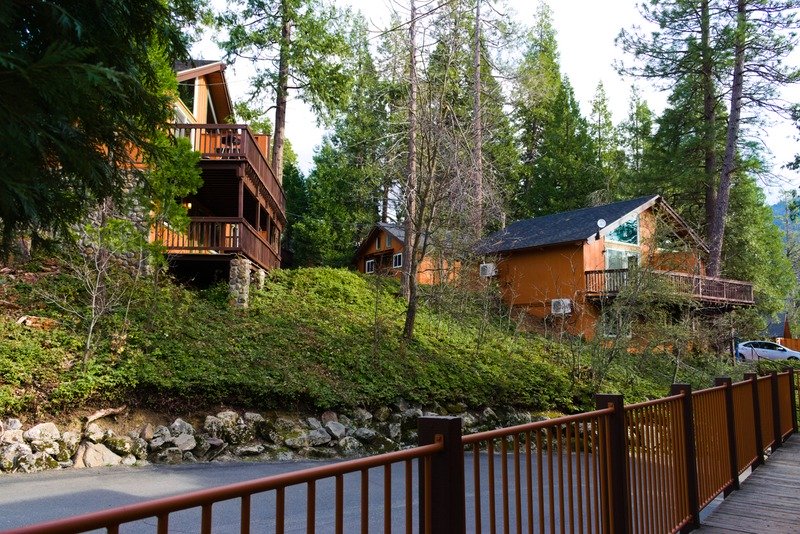Accessing remote resort cabins can be a memorable experience. The tranquility and serene natural beauty add appeal to woodland or mountain stays. To make the experience enjoyable rather than stressful, it is essential to learn practical ways to reach these cabins with ease.
Steps to Easily Access Remote Resort Cabins
Plan Your Trip Carefully
Before heading out, do thorough research on the region and weather conditions. Determine routes and alternatives ahead of time. Utilize maps and online location services to gain clarity of roads, trails, or path conditions leading to remote cabins.
-
Use reliable online map services or a GPS.
-
Consider printing maps as a backup.
-
Ensure your selected route is accessible year-round.
Select Appropriate Transportation Methods
Transportation choice depends on the specific location and seasonal conditions. Different means of conveyance can significantly affect convenience and accessibility.
-
Four-wheel drive vehicles for rocky, unpaved roads.
-
All-terrain vehicles to maneuver through forested or hilly landscapes.
-
Boat or ferry for cabins located on islands.
Coordinate with Resort Management
The best way to simplify remote access is to communicate with cabin resort management in advance. They can warn about adverse conditions, update road statuses, and provide precise directions. This coordination reduces uncertainties upon reaching the cabin locations.
Pack Essential Equipment and Supplies
Take appropriate equipment to simplify remote access. Planning supplies reduces struggles during travel and upon arriving at the resort cabin.
-
Flashlights, extra batteries, and headlamps for night or low visibility.
-
Fully charged power banks for charging phones or GPS devices.
-
Food provisions and bottled water for unexpected delays.
Consider Weather Conditions Before Departure
Weather plays an essential role in remote locations. Always check forecasts regularly and ensure conditions are appropriate for safe travel before leaving home.
Use Accessible Resorts with Shuttle Services
One convenient method of reaching remote resorts is arranging transportation with services from the resort itself. Many popular holiday destinations offer convenient resort shuttle service, allowing travelers ease and comfort. Such services can include scheduled pickups from train stations, airports, parking lots, or nearby towns to facilitate safe arrival at cabins tucked away from main streets.
Seek Online Reviews and Travel Advice
Read online reviews or travel blogs that explain access to remote cabins. Reviews often detail experiences about navigating difficult terrain, routes and helpful tips from previous travelers. These resources prepare travelers for unexpected circumstances or areas that require caution.
Acquire Permits and Permissions Early
Certain remote cabin sites require special entry permits to regulate visitation numbers or environmental protections. Contact local authorities or resort owners early to attain the required permissions. Doing this before traveling avoids inconvenience and complications upon arrival.
Make Use of Special Offers and Discounts
Travel costs to remote areas can be significant — any savings opportunities help reduce overall expenses. Resorts often propose discounted ticket sales to local attractions and events. Availing these discounts optimizes vacation spending and provides substantial value for travelers looking to add activity variety to cabin stays.
Ensure Safety Measures are Observed
Safety becomes crucial in remote areas because responses to emergencies can be delayed. Follow basic safety measures and inform family or friends about planned routes and arrival times. Equip yourself with emergency medical supplies and inform cabin management about any specific medical issues.
Book Cabins that Include Additional Comfort Services
Many travelers seeking remote locations desire relaxation options available onsite. Remote cabins usually provide extra services, such as relaxing spa services. Utilizing cabins offering these facilities enhances a vacation, allowing visitors respite after tiring journeys particularly into remote landscapes. Enjoying this comfort after access issues makes travel efforts worthwhile.
Stay Connected with Wireless Communication
Remote areas often lack stable cell service. Travelers should prepare by bringing portable satellite devices or two-way radios to maintain consistent communication with companions or emergency services. These devices ensure reliable contact if unexpected scenarios occur during travel or cabin stays.
Check Accessibility and Facility Standards
Review cabin facility standards and accessibility before booking. Some cabins might involve steep terrain with limited walking paths, potentially problematic for families with young kids, elderly individuals, or those with mobility obstacles. Choose cabins catering specifically to individual accessibility concerns ensuring a smooth experience.
Be Conscious of Environmental Responsibilities
Travelers visiting remote locations share common responsibilities to protect environment. Practice sustainable habits like leaving no waste behind, using reusable water bottles, and maintaining caution with campfires. Being respectful of wildlife and ecosystems preserves locations for future visitation.
Optimize and Manage Booking Details
Proper booking management simplifies remote resort cabin access. Ensure check-in and check-out times match travel plans conveniently. Clear communication regarding arrival processes with cabins equipped for keyless entry methods removes waiting uncertainties upon entry.
Maintain Comfortable Clothing and Footwear
Appropriate clothing during travel reduces physical strain related to harsh weather conditions or challenging landscapes. Opt for weatherproof outerwear, comfortable footwear for navigating uneven terrain, and layered clothing suitable for changing environmental temperatures.
Establish Comfort Upon Arrival
After reaching cabins, immediately ensure that all critical cabin facilities like heating, electric generators, potable water, and essential amenities are functional. Checking necessities ahead allows management the opportunity to resolve concerns quickly.
Have Ready Access to Local Guidebooks and Maps
Bringing updated regional maps or guidebooks describing hiking paths, local activity opportunities, dining establishments, and emergency contacts provides essential information. These resources support travelers in exploring the region comfortably upon reaching the cabin.
Implement a Reliable Backup Plan
In cases of road accidents, weather changes, or unexpected transportation hindrances, always develop contingency plans. A backup strategy reduces anxiety levels, providing alternative sensible choices, including alternative accommodations or route adjustments for practical support in unpredictable conditions.
Participate and Engage in Community Groups
Familiarizing oneself with local communities contributes to enjoyable visits. Engaging actively in local gatherings can enrich experiences, especially during longer stays. Connecting with residents also allows easy resolution of difficulties related to cabin access or living comfort.
Closing Remarks
Careful advance planning, precise transportation methods, and cooperation with resorts ensure simpler routines for accessing remote resort cabins. Additionally, availing special services around resorts and considering essential aspects such as safety, comfort, environment, and backup plans significantly enhance travel experiences. Each visitor holds the responsibility to remain mindful of nature and local communities whilst enjoying the uniqueness remote cabins offer.


